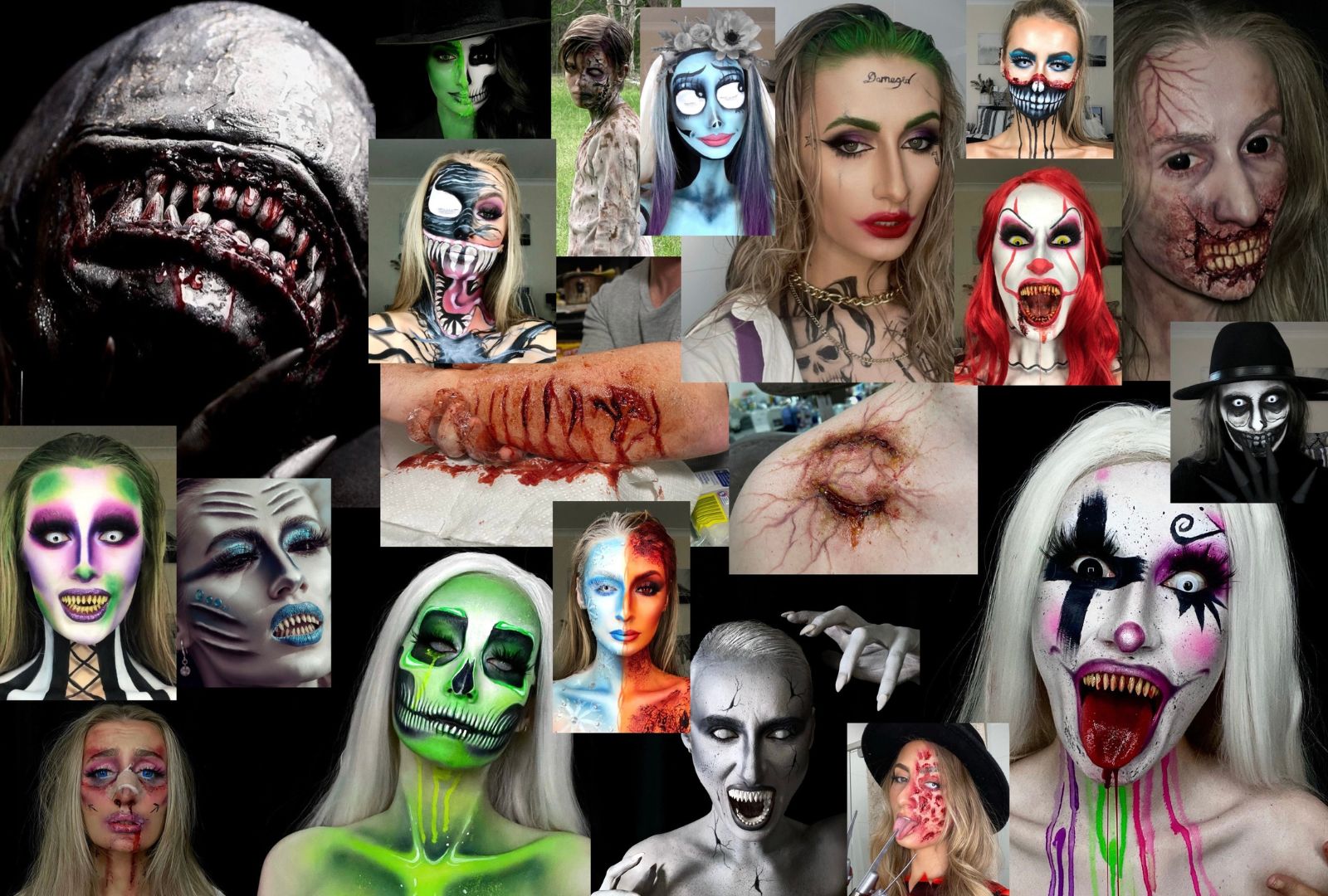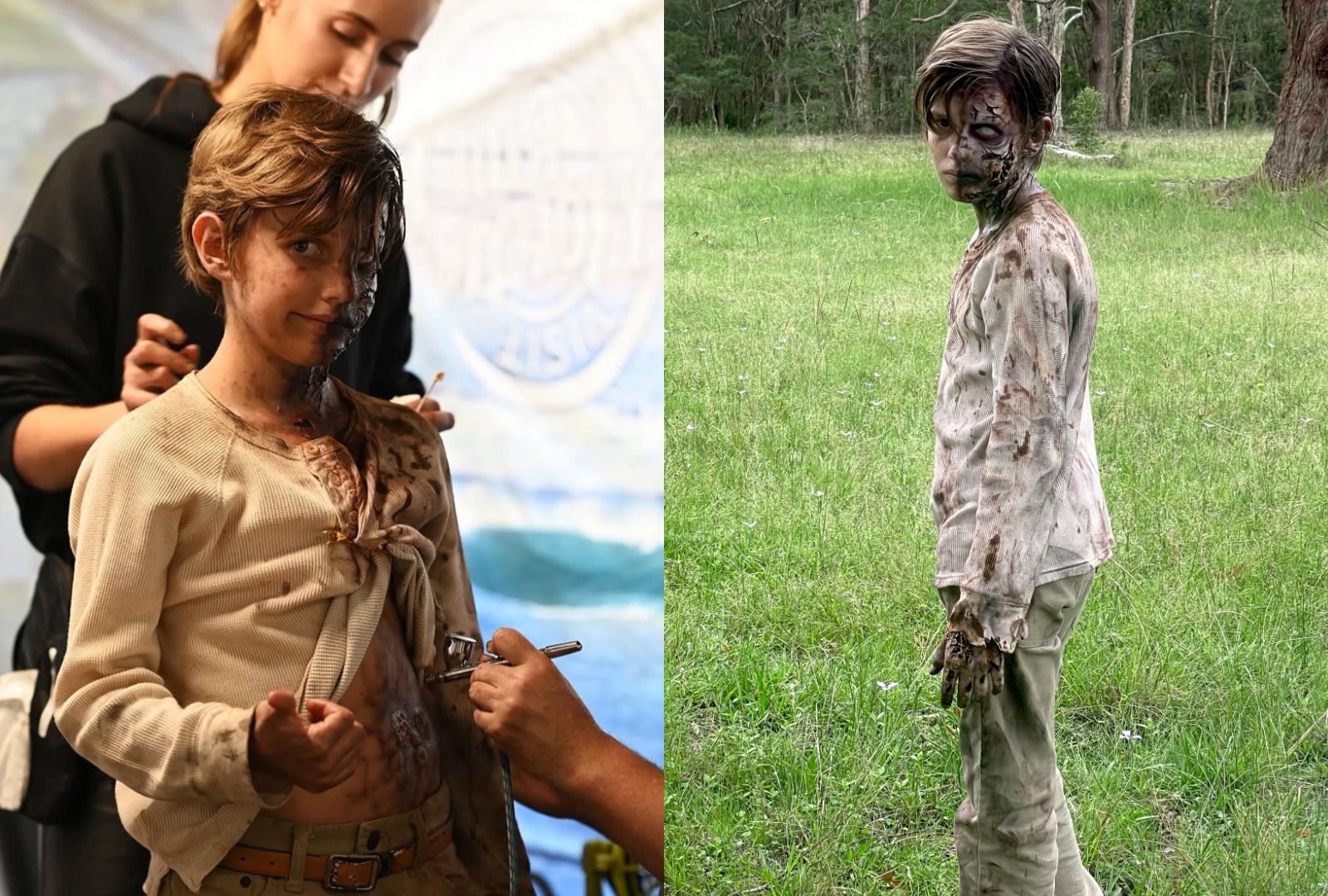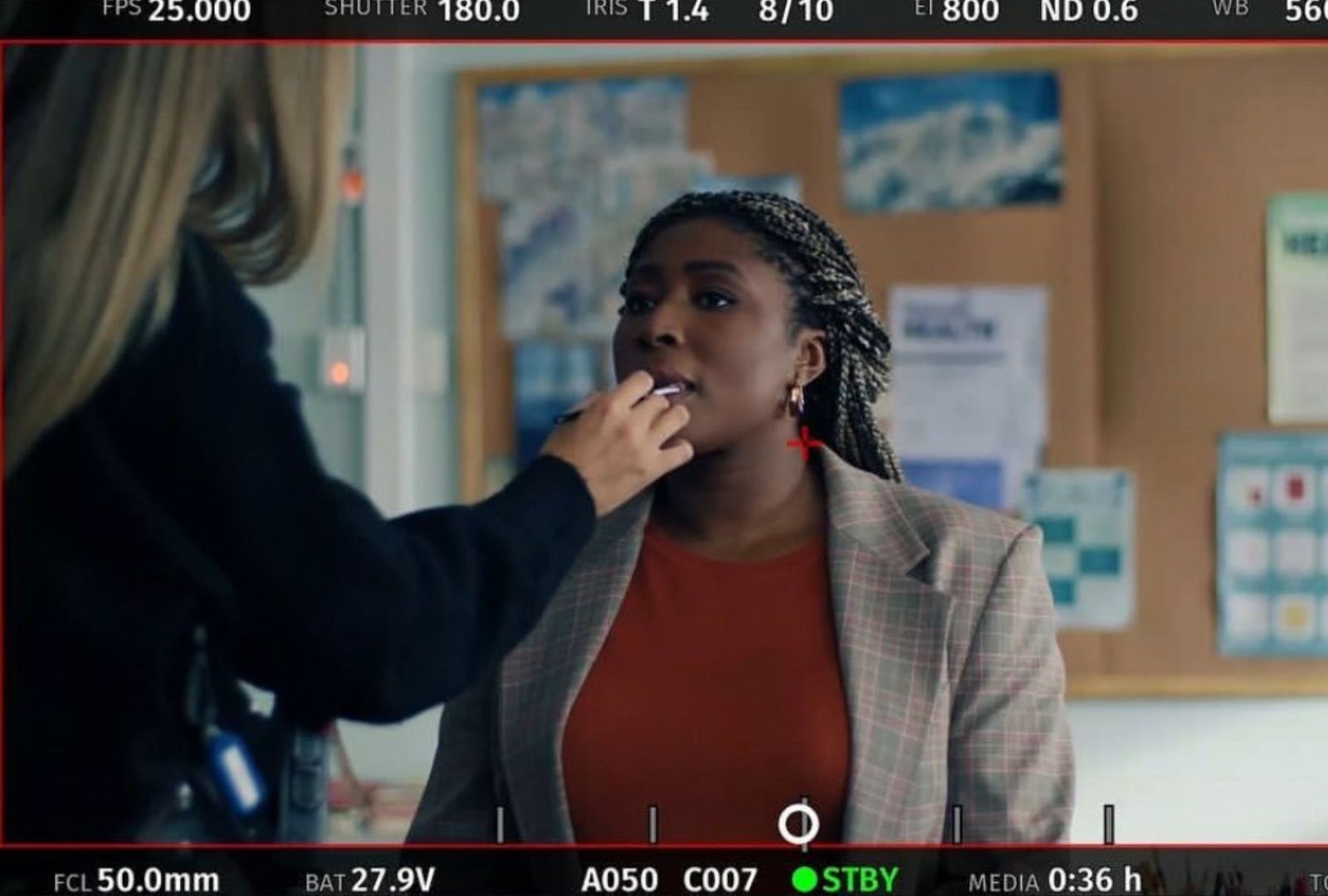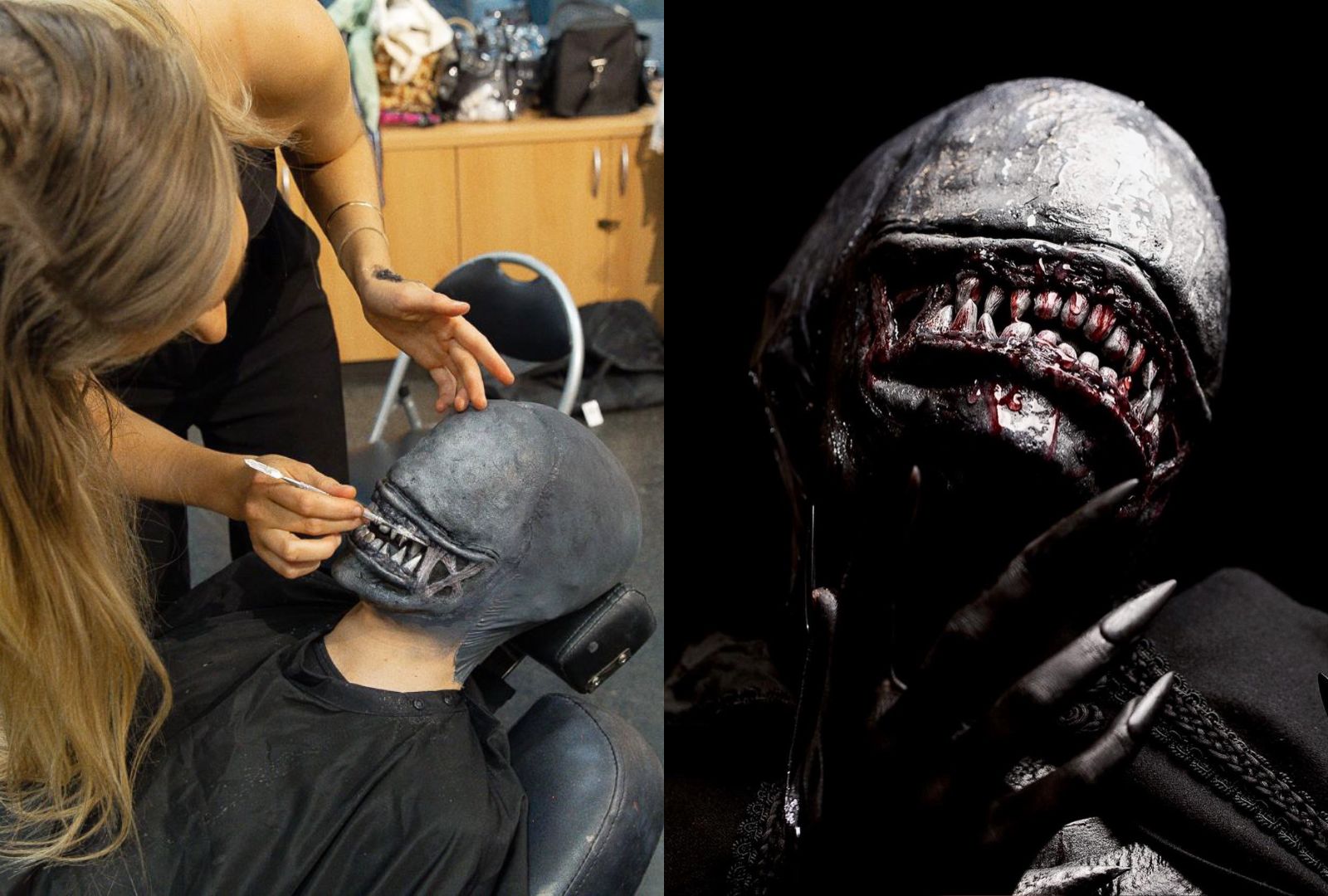Kiarna Strauss (Screen and Media, Specialist Make-up Services, 2022) is a make-up magician, bringing actors back to life with zombie prosthetics or transporting audiences to the 19th century with nuanced techniques. Since graduating just three years ago, Kiarna has already worked on major productions including Heartbreak High, The Artful Dodger and most recently the proof of concept for the zombie film HALFTURN. In this interview, she shares her creative process, favourite looks, memorable on-set moments and how social media helps her keep up with trends and upskill as a make-up artist.
What first drew you to make-up artistry and why did you choose to pursue your Diploma of Screen and Media (Specialist Make-up Services)?
My fascination with make-up artistry began with a love for film, television, and the transformative power of special effects make-up. I was captivated by the ability of make-up artists to transport characters to new worlds, evoke emotions, and tell stories through their craft. As I explored the world of special effects make-up, I realised that it combined my passions for art and storytelling.
Pursuing my Diploma of Screen and Media (Specialist Make-up Services) was a natural next step for me. This course allowed me to hone my skills in special effects make-up, prosthetics, and character design, while also learning about the industry’s best practices and standards. I’m excited to continue to apply my knowledge and skills to create immersive and believable characters on screen in the future and am confident this qualification has helped me to succeed in this field.

Your portfolio is diverse, working across film, TV and special effects. Do you have a preference when it comes to taking on new projects?
While I enjoy working across various mediums, including film and TV, my true passion lies in special effects and prosthetic make-up. I find it incredibly rewarding to create complex, realistic characters and creatures that transport audiences to new worlds. There’s something magical about seeing a design concept come to life through a combination of artistry, craftsmanship and technical skill.
When it comes to new projects, I’m particularly drawn to those that involve pushing the boundaries of special effects and prosthetic make-up. Whether it’s creating intricate wounds, aging characters, or bringing fantastical creatures to life, I’m excited to take on challenges that allow me to showcase my skills and creativity in this area.
Your make-up for the proof-of-concept trailer HALFTURN required extensive SFX and prosthetics. Can you walk us through the process of creating the zombie looks? What was the most challenging or rewarding part?
Creating the zombie looks for HALFTURN was an incredible challenge and it was a dream come true to assist my esteemed prosthetic tutor and Head of SFX Make-up for HALFTURN, Colin Wilson, on this project. To achieve the desired level of decay and brutality, we used a combination of prosthetic pieces, including foam latex pieces, and smaller silicone pieces, while airbrushing and applying fake blood to complete the look.

The process began with Colin designing, then both of us sculpting the prosthetics, which were then cast in various materials. We created a range of pieces, from subtle flesh wounds to more extreme, decomposed looks. Each piece was carefully applied to the actors’ skin using a combination of adhesives and blending techniques to create a seamless integration.
The most challenging part was probably the sheer volume of pieces we needed to create and apply. We had to ensure consistency across the cast while also allowing for individual character development. Additionally, working with prosthetics that needed to withstand the rigors of filming – including sweat, movement, and repeated takes – required careful planning and execution.
The most rewarding part was seeing the zombies come to life on screen. Watching Jake embody his character and bring the make-up to life through his performance was truly exhilarating. When the Proof of Concept was released, it was amazing to see how the SFX make-up contributed to the overall atmosphere and tension of the film. It was a true team effort, and I’m proud of what we achieved – a big thank you goes to Colin Wilson for having me as his assistant on this dream project.
The Artful Dodger and Heartbreak High have very different make-up outcomes. How do you adapt your creative approach for period pieces versus more modern looks?
When working on period pieces like The Artful Dodger, I try to immerse myself in the era’s aesthetic, researching historical references, fashion, and make-up trends. I focus on accuracy and authenticity, ensuring the make-up complements the production design and costumes. For example, I might use more subtle, nuanced techniques to create a naturalistic look that suits the period.

In contrast, modern productions like Heartbreak High allow for more creative freedom and experimentation. We could push boundaries with bold colours, edgy styles, and avant-garde designs. The approach is often more intuitive, responding to the show’s tone and style.
Adapting to different periods and styles requires flexibility and a deep understanding of the story, characters, and director’s vision. By embracing these differences, I can tailor my make-up approach to serve the narrative and enhance the overall visual aesthetic.
Are there any behind-the-scenes moments from your recent projects that stand out as particularly memorable?
There have been so many memorable behind-the-scenes moments, but a few stand out. On HALFTURN, seeing Jake in full zombie make-up was surreal. His transformation was amazing – it felt like looking at a zombie straight from The Walking Dead – and it was in moments like those that reminded me of the power of SFX make-up and how it can transport people to another world (it also reminded me of why I started make-up in the first place, I just love SFX make-up so much!).
Another memorable moment was on The Artful Dodger, where the entire cast and crew’s attention to detail was incredible. Seeing everyone dressed in full 1800s attire felt like time traveling. The set was meticulously designed to match the era, and being surrounded by such dedication to authenticity was inspiring.
How does practicing and experimenting with different styles on social media help refine your skills or influence your professional projects?
Practicing and experimenting on social media has been invaluable for refining my skills. It allows me to try new techniques, test different products, collaborate with brands, and explore various styles without the pressure of a professional deadline. I can take risks, make mistakes, and learn from them, which ultimately makes me a better artist.
Social media also helps me stay current with industry trends and gives me a platform to showcase my work. I receive feedback from my followers, which provides insight into what works and what doesn’t. This feedback loop is crucial for growth and improvement, and I have found it is beneficial to stay on top of what products/make-up looks are trending on social media to gain a better following.
Professionally, experimenting on social media has directly influenced projects. For example, a particular technique I developed for a personal project might find its way into a professional piece. It keeps my creative juices flowing and helps me approach problems from different angles. Social media has most definitely become an essential tool for my artistic development and professional growth.
Is there a misconception people have about working in make-up for film and TV that you wish more people understood?
Surprisingly a big misconception about make-up is that a lot of people think it is easy! Make-up for film and TV isn’t just about applying make-up. People often underestimate the complexity, time, and expertise required to create characters, especially in special effects make-up.
Many think it’s all about looking good on camera, but it’s actually about storytelling, transforming actors into characters, and enhancing the narrative. It requires a deep understanding of the script, director’s vision, and production design. It also requires us as artists to ensure it translates on camera, not only in person, and to alter colouring and textures of the make-up to fit any filters or colour gradings being used on camera/in post-production (Euphoria is a perfect example of using filters/colour grading where the make-up department needs to consider this so colours don’t get washed out!).
Additionally, people often don’t realise the physical demands of wearing heavy prosthetics or make-up for extended periods. Actors’ comfort, skin care, and safety are crucial considerations.
I’d love for people to understand the craftsmanship, artistry, and technical skill that goes into creating make-up effects for film and TV as it is a highly specialised field that requires patience, creativity, and attention to detail.

What’s a dream project or collaboration you’d love to work on in the future?
A dream project for me would be to work on a Tim Burton film. His creations are truly incredible, and I would love to contribute to one of his unique and imaginative worlds. The blend of fantasy, horror, and dark humour in his films is something I find fascinating, and I think it would be an incredible experience to bring his characters and stories to life through SFX make-up.
Other dream projects that would be high on my list include working on a horror movie like the Saw franchise, where the focus is on intense suspense and realistic effects. I’d also be thrilled to work on a sci-fi horror film like the Alien franchise, where the creatures and environments are as terrifying as they are iconic.
Additionally, working on a fantasy series like Harry Potter or Game of Thrones would be amazing, bringing magical creatures and characters to life through SFX make-up. And, of course, a TV series like The Walking Dead, with its heavy emphasis on SFX make-up and realistic, gruesome effects, would be an adrenaline rush for me.
Ultimately, any project that allows me to push the boundaries of SFX make-up and contribute to telling a compelling story would be an exciting opportunity!
Interested in learning more about NIDA’s Diploma of Screen and Media (Specialist Make-up Services)? Join us Saturday 14 June for Open Day.
